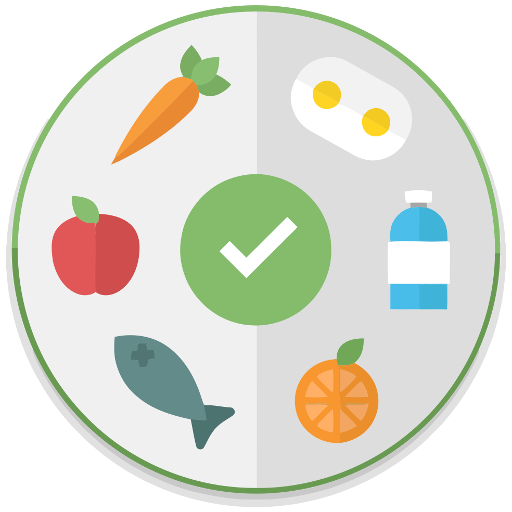
Creating a menu that promotes healthy eating for families can be a daunting task, but it can be done with a few tips. Consider substituting liquid fats for solid fats. You can use olive oil instead of butter, which is also healthier. Next, you should choose whole grains over refined sugar and white flour. Try introducing a new vegetable each week. You should introduce a different variety of vegetable each month to encourage your children to eat more vegetables.
Talk with your family to discuss what you'd prefer for your meals and the changes you'd make. It is common for children to follow their parents' lead, so make sure you are setting good examples. Stick to your goals. Make sure your family is on board with your new lifestyle plan so they can support you and avoid common pitfalls. You can create a family menu and become a role model by getting your family involved.

Encourage your children to participate in the preparation of meals. Children should be able to help cook the meals, especially if they are a family meal. Encourage your children to be responsible for their meals and try different foods. For extra motivation, make sure to offer rewards other than food. If you're raising younger children, consider using a reward system. A reward system allows children to earn additional screen time and/or an allowance for eating certain foods.
Even though most people don’t know it, sharing meals with the family can prove to be a great way to bond. This keeps your family connected and encourages them to stay engaged and motivated. Studies have shown that healthy eating habits are more common in children who eat together with their parents. It's good for your kids' health and self-esteem. This will set you and your loved ones on the right path to promoting healthy eating habits and a positive outlook.
In order to make your family meals more healthy, add more vegetables. Although it might not be possible to include all the recommended daily servings of vegetables in every meal, it's important to include fruits and vegetables in each meal. You don't have to cook a huge meal for the entire family. You can increase your children's daily consumption by incorporating a variety if vegetables into your meals. The more vegetables that you can add to your meals the better.

Also, try to avoid processed foods when planning meals for the family. Healthy substitutions can be made by substituting whole grains for refined grains. Aim for half of your family's grains to be whole grains, which includes whole wheat bread, pasta, and brown rice. You can also use whole grains to make healthy snacks and dips like bulgur, whole-wheat couscouscous, quinoa and whole-wheat couscouscous.
FAQ
Why is it important to live a healthy life?
Healthy living can lead to a longer, more fulfilling life. A healthy diet, regular exercise, good sleep habits, and stress management will help prevent diseases like heart disease, diabetes, cancer, and stroke.
Healthy lifestyles will help us to cope with daily stresses better and improve our mental health. A healthy lifestyle will help us feel more confident and younger.
What is the problem?
BMI stands for Body Mass Index, which is a measurement of body fat based on height and weight. The following formula is used to calculate BMI:
Weight in kilograms divided with height in meters.
The result is expressed in a number between 0 - 25. A score of 18.5+ indicates that you are overweight. A score higher than 23 indicates that you are obese.
A person who is 100 kg in weight and 1.75m in height will have a 22 BMI.
How much should I weigh for my height and age? BMI calculator and chart
A body mass index calculator (BMI) is the best way to find out how much weight you should lose. A healthy BMI range is between 18.5 and 24.9. Aim to lose 10 pounds per month if your goal is to lose weight. Enter your height and weight to calculate your BMI.
This BMI chart will help you determine if your body is overweight or obese.
Statistics
- According to the Physical Activity Guidelines for Americans, we should strive for at least 150 minutes of moderate intensity activity each week (54Trusted Source Smoking, harmful use of drugs, and alcohol abuse can all seriously negatively affect your health. (healthline.com)
- In both adults and children, the intake of free sugars should be reduced to less than 10% of total energy intake. (who.int)
- According to the 2020 Dietary Guidelines for Americans, a balanced diet high in fruits and vegetables, lean protein, low-fat dairy and whole grains is needed for optimal energy. (mayoclinichealthsystem.org)
- WHO recommends consuming less than 5% of total energy intake for additional health benefits. (who.int)
External Links
How To
What does the word "vitamin" mean?
Vitamins are organic compounds that can be found in foods. Vitamins allow us to absorb nutrients from food. The body cannot make vitamins; therefore, they must be obtained from food.
Two types of vitamins exist: water-soluble vitamin and fat-soluble vitamin. Water soluble vitamins dissolve easily in water. You can find vitamin C,B1 or thiamine, B2 or riboflavin and B3 or niacin, B3/niacin, B6/pyridoxine, folic Acid, biotin and pantothenic Acid as examples. The liver and fat soluble vitamins are stored within the liver and in fatty tissue. You can find vitamin D, E K, A, beta carotene, and other fat-soluble vitamins.
Vitamins can be classified according to biological activity. There are eight major groups of vitamins:
-
A - vital for healthy growth.
-
C - important for proper nerve function and energy production.
-
D - Essential for healthy teeth and bones.
-
E is necessary for good vision, reproduction.
-
K - Required for healthy nerves and muscles.
-
P - Essential for strong bones and teeth.
-
Q - aids digestion, absorption and absorption iron
-
R - Required for red blood cell production
The recommended daily allowance for vitamins (RDA) varies based on gender, age, and physical conditions. RDA values are set by the U.S. Food and Drug Administration (FDA).
For adults over 19 years, the RDA is 400 mg per day for vitamin A. However, pregnant women need 600 micrograms per day because it is important for fetal development. Children ages 1-8 require 900 micrograms per day. For infants younger than one year, 700 micrograms are required daily. However, this number drops to 500 micrograms each day for children aged 9-12 months.
Children ages 1-18years who are obese need 800 micrograms per day while those who are overweight need 1000 micrograms per day and children who are underweight need 1200 micrograms per day to meet their nutritional needs.
Children 4-8 years old who have anemia must consume 2200 micrograms of Vitamin C daily.
Adults over 50 years of age need 2000 micrograms per day for general health. Mothers who are pregnant, nursing, or have a high nutrient need will require 3000 micrograms a day.
Adults over 70 require 1500 micrograms each day, since they lose around 10% of their muscle mass every decade.
Women who are pregnant or lactating need more than the RDA. Pregnant and breastfeeding women require 4000 micrograms each day during pregnancy and 2500 Micrograms each day after delivery. Breastfeeding mothers need 5000 mg per day when breastmilk is being produced.